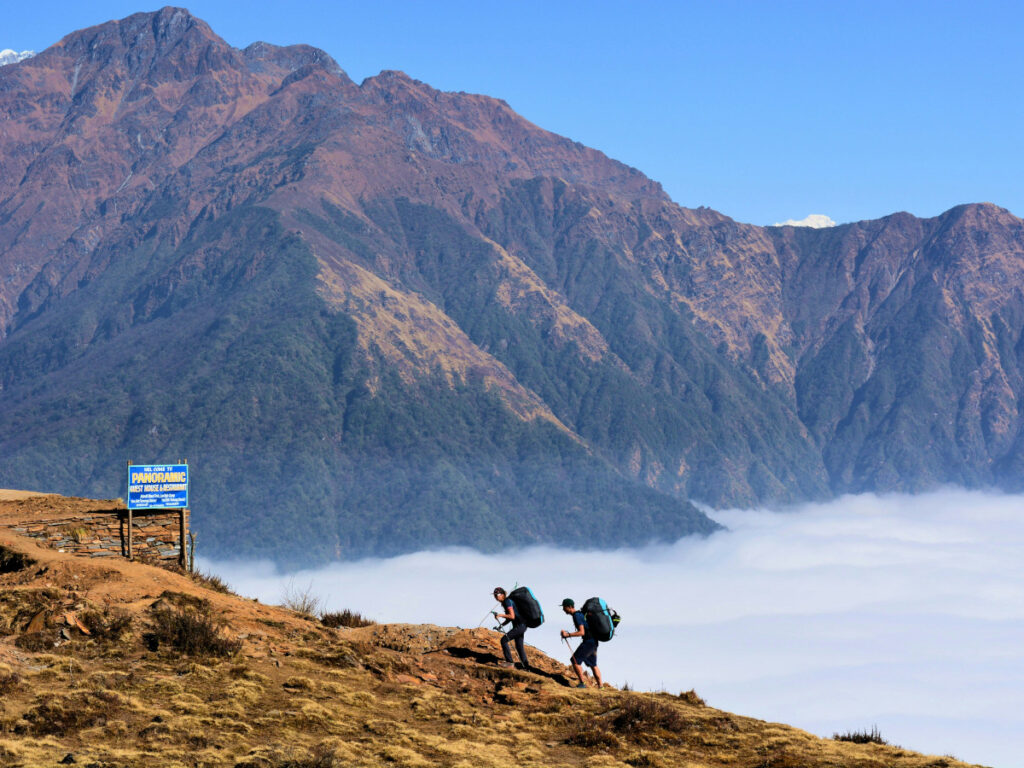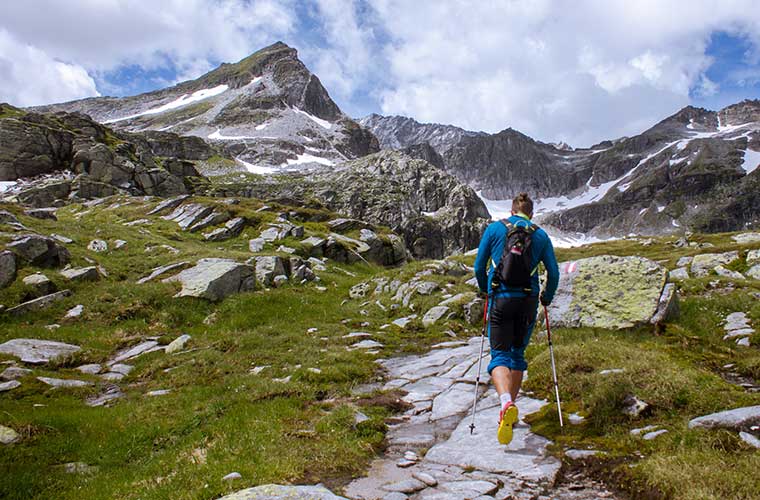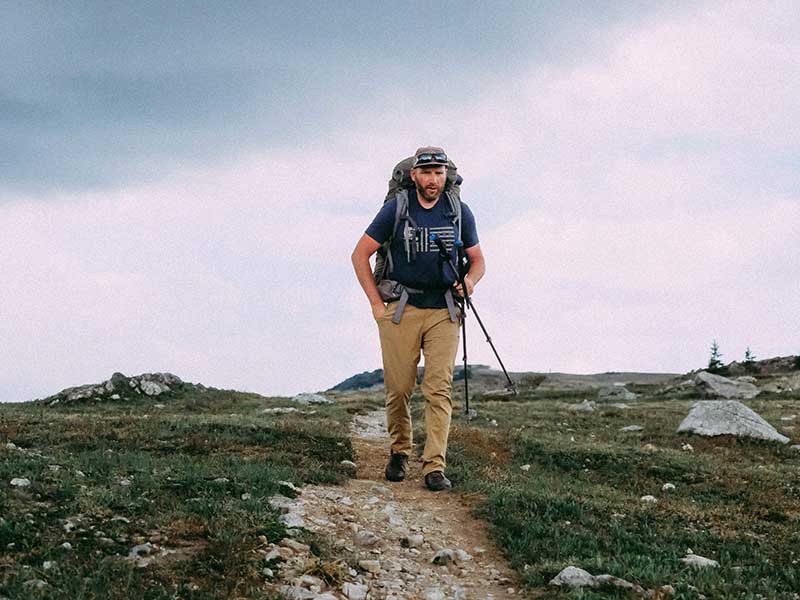7 exercises to increase your strength for trekking
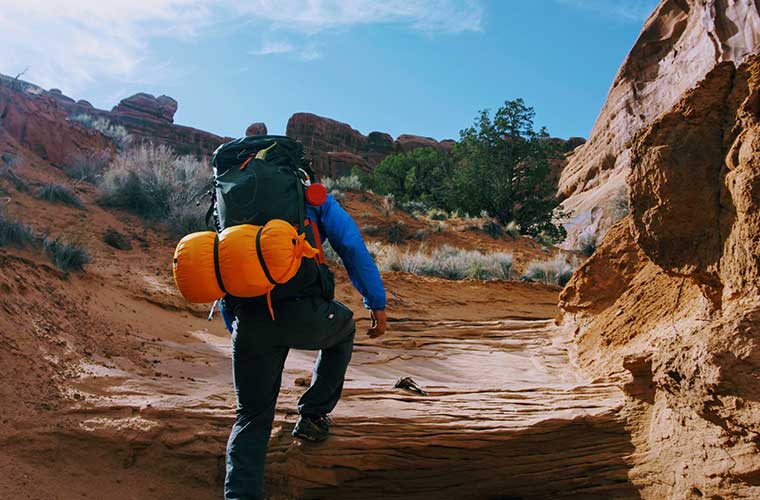
More and more people are taking up the attraction of trekking. However, in order to do this activity, it is necessary to have, in principle, a a great deal of willpower and a optimal physical condition, as well as working on aerobic capacity.. Trekking routes are often demanding and require endurance and muscular strength. The good news is that you can prepare your body to arrive in the best possible condition.
Experts recommend that training should begin approximately four weeks prior to the planned date of the trekking -at least three sessions per week. It is also important to see a doctor and undergo tests to certify that you are fit for high-intensity exercise.
YOU MAY BE INTERESTED IN: Complete guide: How to train for Rock Climbing and Bouldering".
Strengthen abdominals and back
It should be borne in mind that trekking requires a considerable amount of weight to be carried. In order to control this load, the abdominal and back muscles in particular must be strengthened.
- Uneven weight. The aim of this exercise is to boost the stability of the body with heavy weights. Do five sets, one for each side, and rest for thirty seconds between each set. You can use two dumbbells, the weight between them should be 40% of your body weight. Distribute them so that one dumbbell weighs more than the other. First lift the dumbbells, one in each hand, squatting down, with your back straight and pushing up from your heels. Stand up straight, with your shoulders back. Now walk slowly for about thirty metres, taking steps of no more than 30 centimetres. Shift the weights to the side and step back. To make the exercise more intense, add weight each week until you reach a maximum of 50% of your body weight.
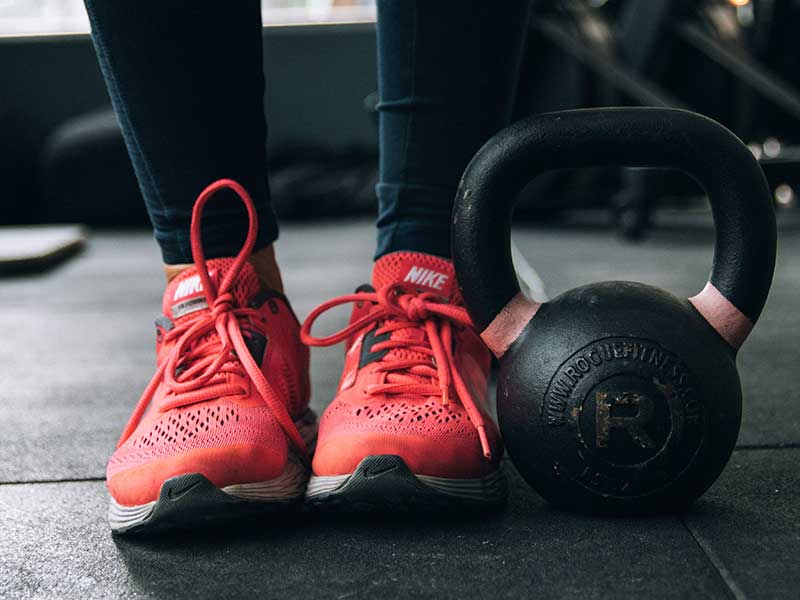
- At the bar. This exercise will simultaneously strengthen the muscular system, promoting synergy between the glutes and the hamstrings. It should be done three sets of five repetitions each one, resting thirty seconds between each series. Hang from a bar with your feet bent and your arms straight. Lower the shoulder blades from the ears, downwards. Lift your knees towards your chest, count to two and lower your legs, keeping your abs and glutes tight. For more exercise intensity, raise your legs straight up until they are parallel to the floor.
- With an unstable surface. This exercise will train your heart to do routes on uneven terrain. You should use a "bosuThe "bosu" is a balancing hemisphere, usually made of latex. With your back to the "bosu", get into a sitting position on the hemisphere. Put your arms behind your head and bring your elbow to your opposite knee. Repeat this twice and then repeat on the opposite side. To make the exercise more intense, stretch out on the floor without touching it with your arms. Instead of touching the elbow to the knee, join the hand with the opposite foot. In other words, left hand with right foot and right hand with left foot. Do three sets of eight repetitions each. Rest thirty seconds between each series.
- Modified side table. This exercise strengthens the muscles of the lower back and sides. It should be done three sets of 10 repetitions each one, resting between sets for ten seconds. First get into the side plank position, keeping your head, shoulders, hips and knees aligned. Now extend your upper arm outward from your shoulder towards the ceiling. Rotate as if moving into plank position, bending your arm towards the opposite hip. Then return your arm to the ceiling. Repeat ten times and switch sides. To make it stronger, you can hold a weight in the hand you lift to the ceiling.
Strengthen legs and buttocks
Trekking requires a great deal of effort. You have to take into account that the hikes will be long and your legs and gluteus muscles must be strengthened to be able to endure the ascents and descents.
- Weighted ladders. For this exercise you will need to adjust a backpack in the lumbar region. It can be the same as the one that will be used on the expedition. You should add two kilos each week until you reach ten kilos. The exercise consists of going up and down the stairs ten flights of stairs, if possible without pausing. After each set, rest for two minutes and repeat the sequence. This should be done for 30 minutes.
- Lunges. With four kilogram weights in your hands, arms outstretched at the side of your body and feet together, advance one leg first, bending it 90 degrees and without advancing beyond the tip of your foot. Bend the other leg as well, but without reaching the floor. Do three sets of thirty repetitions each and rest between sets for two minutes.
- Bench stride. This exercise can be done with a two kilogram ankle brace. Stand in front of a bench, place one foot on it and step up with the other leg extended. Do three sets of about 20 to 30 repetitions with the same leg and rest for one minute between repetitions. The weighted ankle brace, which adds intensity to the exercise, should be placed on the lower leg and then changed when the leg is changed.
Breathing minimises the risk of injury
To minimise the risk of injury during abdominal exercises, you can do a simple exercise. With one hand on your chest and one hand on your abdomen, inhale the air as hard as you can. The stomach should be protruding and the ribs should remain.
Now exhale deeply and you will feel a contraction in the lower abdominals. Squeeze your buttocks and tilt your pelvis towards your navel, remembering and concentrating on the contraction for a few seconds.
Every time you do an exercise, concentrate on feeling that type of breathing. This will increase the benefit of the exercise and reduce the risk of injury.
READ ALSO:
Don't miss any adventure in the Pyrenees!

